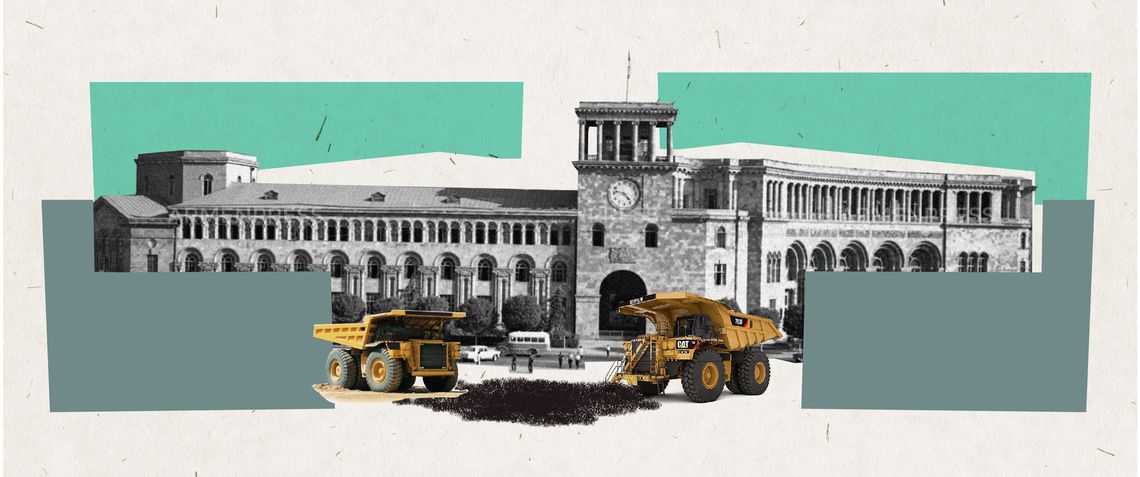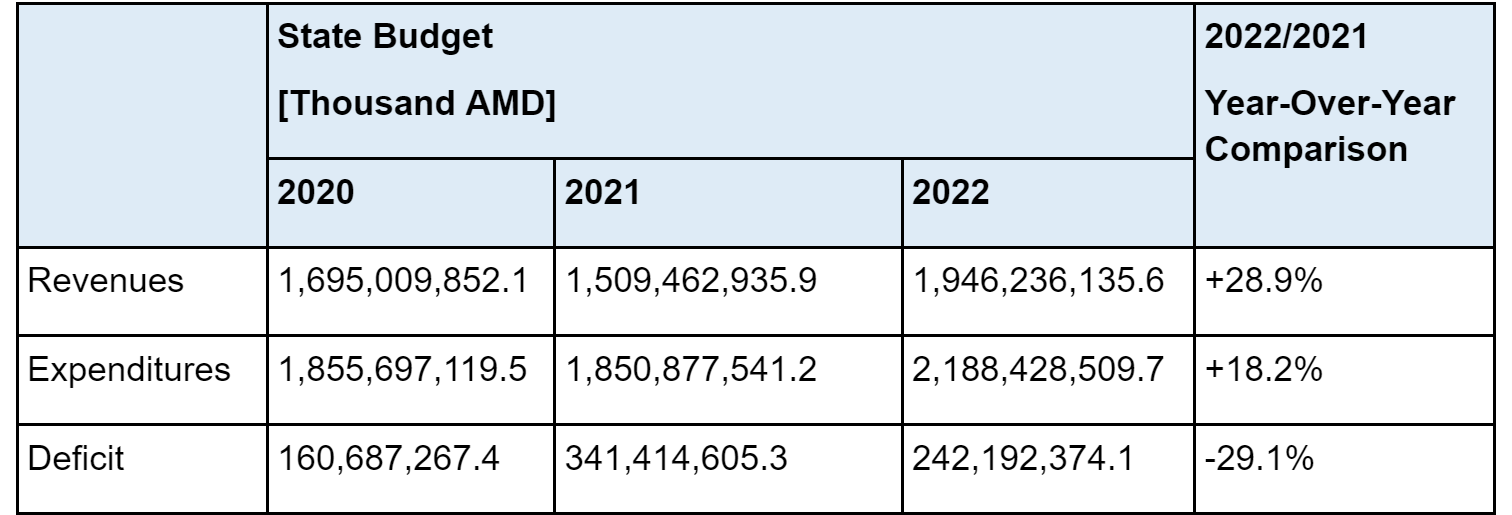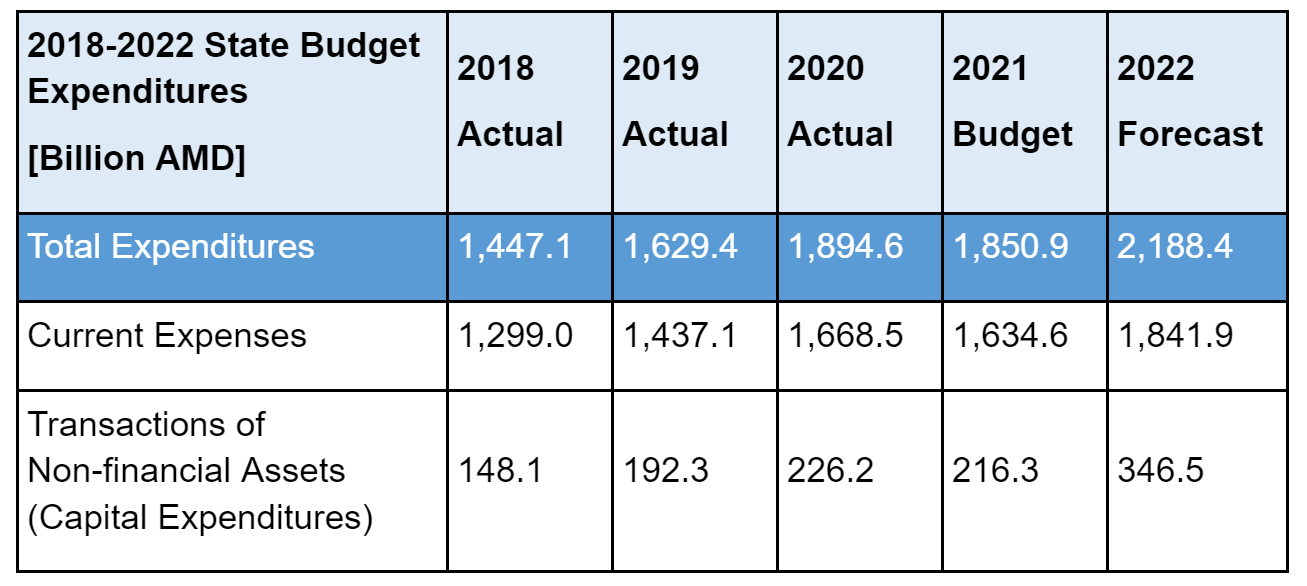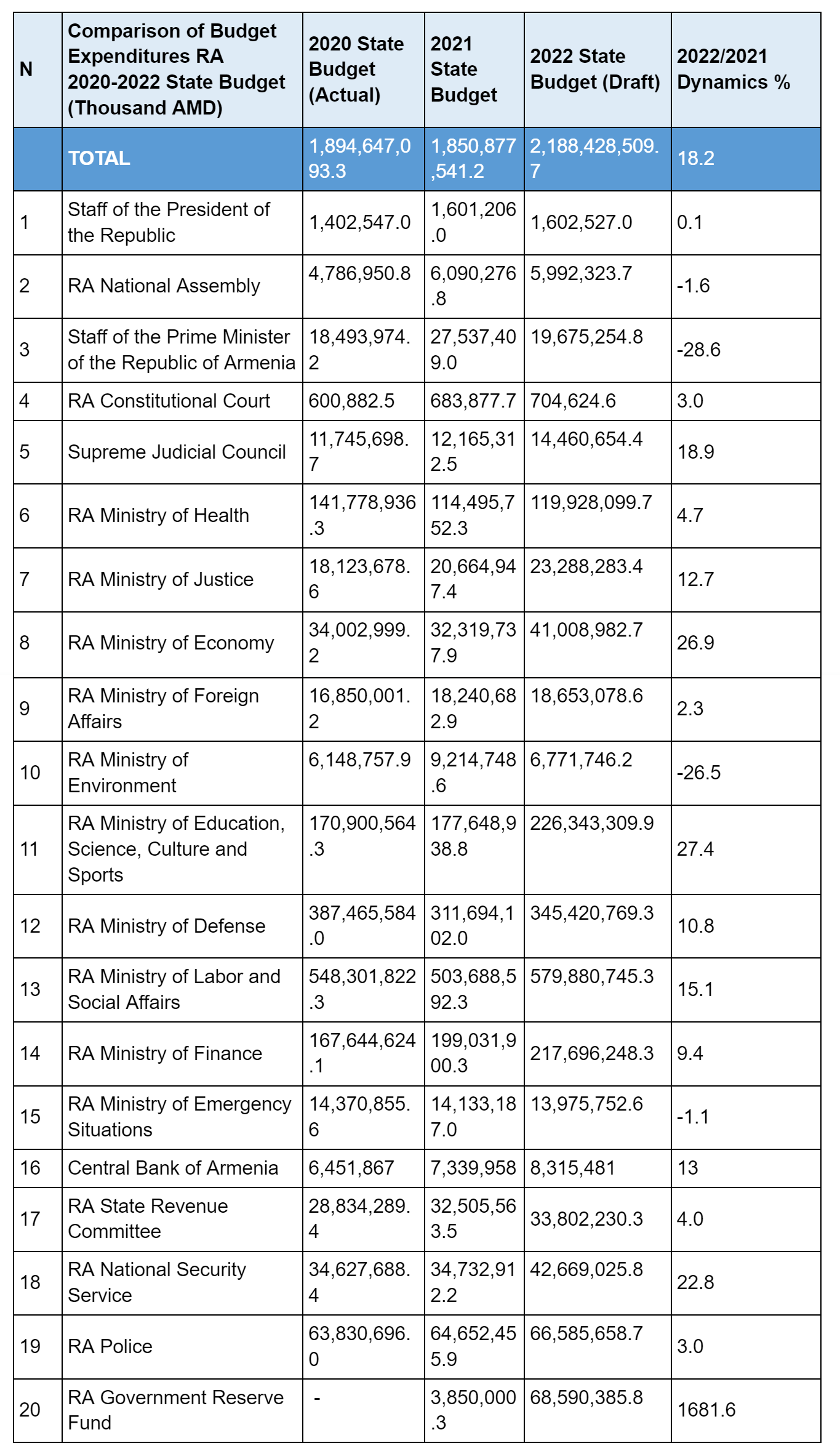
The state budget is the most important fiscal policy tool for any country. It delineates the society’s (or at least the government’s) priorities and the distribution of the responsibility to pay for them. The state budget should also nurture long-term development prospects.
On September 30, 2021, the Government of the Republic of Armenia (the cabinet of ministers) adopted and submitted for approval by the National Assembly the draft law on the state budget of the Republic of Armenia for 2022. While the 2021 state budget was, essentially, just treading water, there are incomparably greater expectations from the 2022 iteration, especially with regard to the consequences of the 2020 Artsakh War and its ensuing regional challenges.
The guiding light for the 2022 budget was the Armenian Government’s 2021-2026 Action Plan, according to which the Government’s target is to achieve a high rate of long-term real economic growth—at least 7% annually, and up to 9% if external factors align with best-case scenarios. In short, the main path to ensuring 7% GDP growth will be the start of operations at the Amulsar gold mine. In its 2021-2026 programme, the Government promised that the share of small and medium enterprises (SMEs) in the country’s GDP will be 55%, in addition to 15% from the manufacturing industry and 6-7% for the IT sector. However, the 2022 budget is lacking the measurable targets to achieve these indicators.

Table 1. Armenian State Budget Deficit 2020-2022
According to the draft state budget, the cost of programs financed for 2022 will be worth 2.19 trillion AMD ($4.4 billion), which, compared to the previous year, has increased by 18.2% or 338 billion AMD ($680 million). At the same time, state revenues are set to increase by 28.9% or 437 billion AMD ($885 million), bringing it to 1.95 trillion AMD ($3.9 billion). The budget deficit will be 242 billion AMD ($490 million), down by 29% from 2021, and making up 3.1% of GDP. The cost of servicing the national debt in 2022 is projected at about $1 billion; that is, 23% of budget expenditures will be allocated to repaying previous loans.
In comparison to the budget reductions in 2021, the increases in the 2022 state budget indicators are ambitious.
Raking It In

Table 2. Armenian State Budget Revenues
The required increases in revenues will mostly come from the collection of taxes and state duties. The Armenian Government is committing to tightening tax administration. If it expects a tax revenue increase of 28% with economic growth of only 7%, it may also increase the tax burden in certain areas. If there are no other factors, it will not be possible to achieve the budget’s goal by leaning solely on tax revenues from the mining sector.
Therefore, the tax policy should be reviewed by introducing a progressive tax system, where individuals with a higher income are required to pay a higher marginal tax rate. In addition to a graduated individual income tax regime, the Government should also review how interest income is taxed. While the flat tax on wages will hit 20.5% in 2022, interest income from bank deposits is taxed at only 10% and corporate bonds are taxed at 0%. As these financial instruments are typically held by wealthier individuals, it can be said that Armenia does not actually have a flat tax system, but a regressive one, where the wealthy pay less. Harmonizing these rates can be considered as a source of additional tax revenue.
As for the “other revenues” category of the state budget, the numbers reveal that no significant revenues are expected from the nationalization of illegally-obtained property, contrary to what was promised by the ruling party during the election campaign earlier this year.
The Government is assuming 5.6% inflation for next year, which is higher than in previous years. High inflation rates in both 2021 and 2022 will contribute to increases in nominal state budget revenues. Ballooning grocery bills also equate to higher value added tax (VAT) revenues for the state budget; though, the purchasing power of these sums will be lower. That is, one million drams collected in 2022 won’t be able to procure as many goods and services as it can this year, specifically because of inflation.
Shelling It Out

Table 3. Armenian State Budget Expenditures
Of course, the 18.2% increase in state budget expenditures in 2022 is notable and important, but the ability of the current authorities to actually spend that amount is under question. In the first half of 2020, state budget expenditures were under-executed by 13.4%, current expenditures by 10.2% and capital expenditures by 35.7%. Setting high targets might attract short-term praise, but it is more important for the numbers to reflect an accurate picture of what is possible. When targets are missed, one must also take responsibility.

Table 4. Budget Expenditures by Department
If we look at the state budget in terms of expenditures, it should be noted that spending on defense will increase by 10.8 percent, social security expenses by 15.1 percent, education by 27.4 percent, the National Security Service (NSS) by 22.8 percent, etc. Resources directed to the spheres of environment and emergency situations will be reduced, even though ramped up mining activity creates additional burdens for both.
It is noteworthy that the expenses of the Prime Minister’s Office are to be reduced by 28.6%, but at the same time the government’s reserve fund has increased by 16 times. This reserve fund comes with fewer restrictions and less parliamentary control; it can still be freely spent by the Government with less oversight.
From January 1, 2022, the minimum pension will be raised to 28,600 AMD (per month), up slightly from the current 26,500 AMD. As of 2020, 26,500 AMD was the cost of the basic food basket; that is, those with incomes lower than this are considered extremely poor. Since then, Armenia has recorded high inflation (6.7%) in January-September 2021. In September 2021, food prices specifically increased by 15.8% compared to the previous month. These stats suggest that the basic food basket is now at 30,600 AMD, lower than the projected minimum pension. That is, next year, pensioners will be able to buy less food with their increased pension. Other social benefits are also slated for such an increase in nominal terms but decrease in real terms.
Paying For Future Taxpayers
It is definitely welcoming that the government of Armenia wants to encourage families to have a third child by paying 50,000 AMD/month in benefits for the child until the age of six. However, the policy could be made even more impactful if it came with a means test. That is, if the amount paid by this program to better off families was reduced or eliminated, the amount paid to lower-income families could be increased, keeping the cost to the state budget the same.
To sum up, the state budget of 2022 will not be able to solve the socio-economic and security problems our country is facing, as a result of which poverty will continue to deepen, state debt will increase, dependence on the mining industry will increase, while the inefficiency of spending state funds, and the shadow economy, will intensify.


It would be great if you did another post regarding the 2023 budget, which actually seems very ambitious 🙂